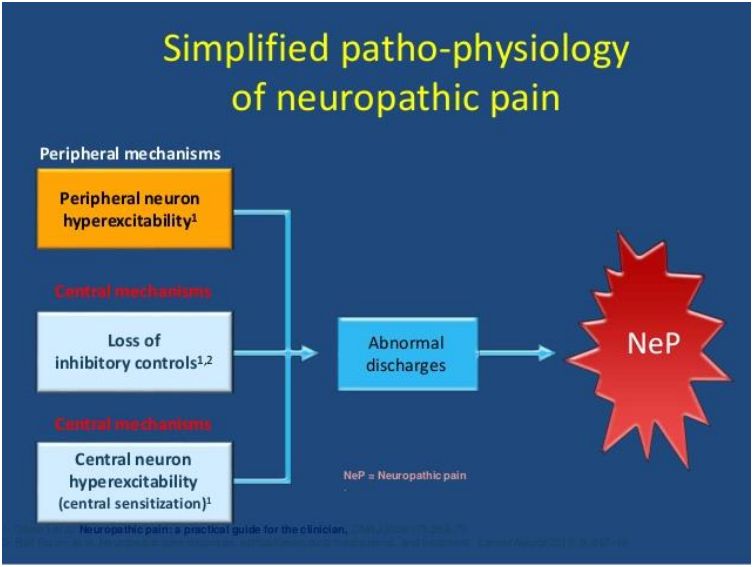NEUROPATHIC PAIN-PERIPHERAL & CENTRAL MECHANISMS
SUMMARY
1. After nerve damage, owing to the ongoing spontaneous activity from primary nociceptors (peripheral sensitization), background activity in second-order nociceptive neurons increases, receptive fields enlarge and responses to afferent impulses, including innocuous tactile stimuli, increase.
2. Repetitive stimulation of primary nociceptive afferents amplifies and prolongs the responses of spinal dorsal horn neurons due to NMDA-receptor activation.
3. Peripheral nerve injury leads to up-regulation of sodium-channel expression within nociceptive dorsal horn neurons.
4. After peripheral nerve injury the post-synaptic receptors on spinothalamic tract (STT) neurons become exposed to neurotransmitters & begin to fire spontaneously (deafferentation super-sensitivity)[1]
2. Inoue H, Sawada M, Ryo A et al. Serial analysis of gene expression in a microglial cell line. Glia 28(3), 265–271 (1999).
.
5. Uncontrolled glial cell activation under neuropathic pain conditions induces the release of proinflammatory cytokines and other substances that facilitate pain transmission[2]
.

Reference(s)
Cifu, D.X. (2020). Braddom’s physical medicine and rehabilitation. Elsevier. Get it on Amazon.
Cuccurullo, S. (2019). Physical medicine and rehabilitation board review. New York: Demosmedical. Get it on Amazon.
O’Young, B., Young, M.A. and Stiens, S.A. (2008). Physical Medicine and Rehabilitation Secrets. Mosby. Get it on Amazon.